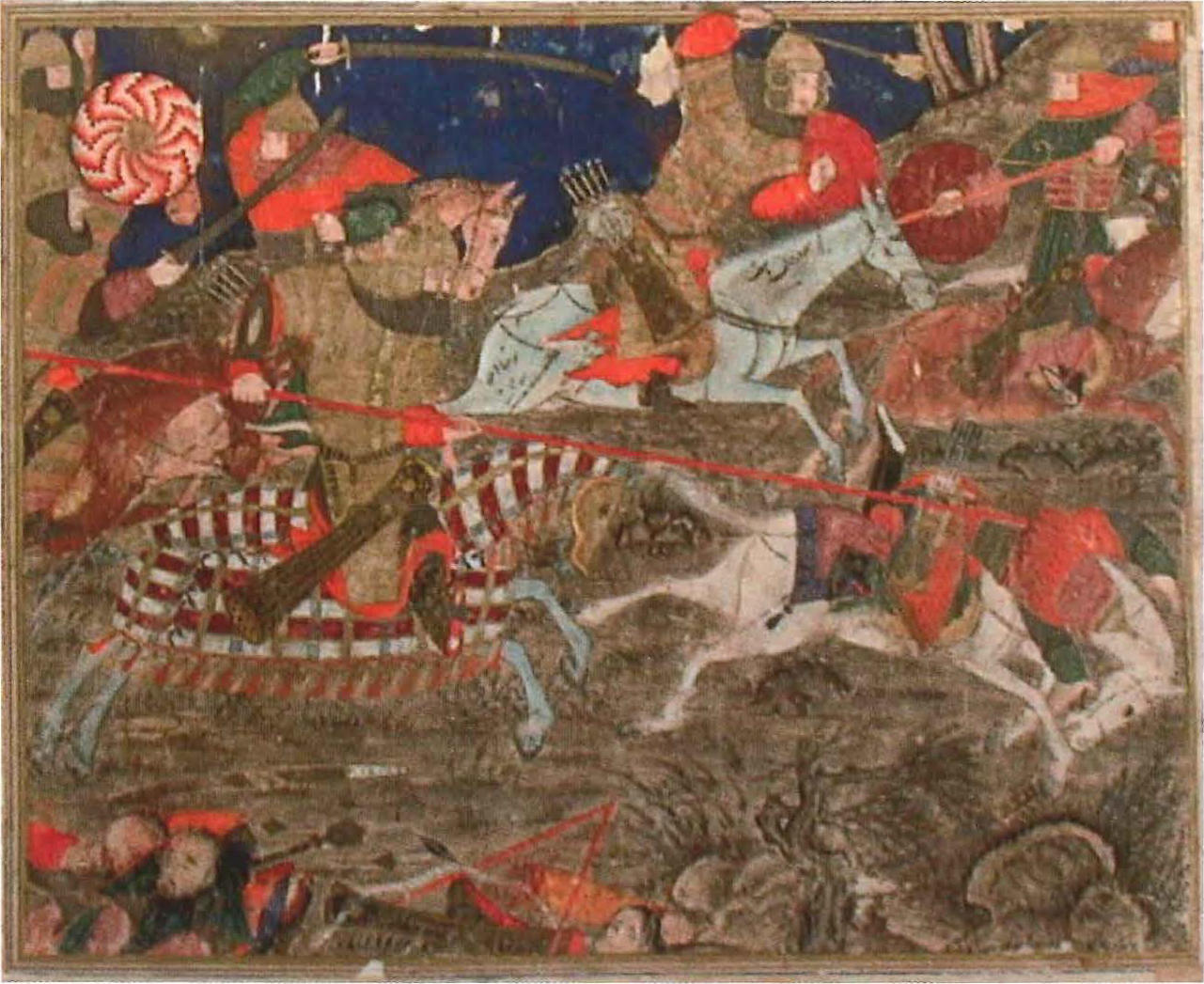Amazon Prime Student 6-month Trial

Join Amazon Prime - Watch Thousands of Movies & TV Shows Anytime - Start Free Trial Now
Illustrations of Jalayrids from a late 14th Century Shahnama
The figures wear contemporary dress or dress of no latter than the date of the illustration.
Manuchihr kills Tur in battle

A larger image of Manuchihr kills Tur in battle, Shahnama, Jalarid Tabriz, Iran
From the Sarai Albums, Tabriz, second half of 14th century. Hazine 2153, folio 22b Topkapi Sarai Museum.
Source: "The Great Mongol Shahnama: Some Proposed Repatriations", in J.Gonnella, F.Weis and C.Rauch (eds), The Diez Albums. Contexts and Contents (Leiden and Boston, 2017), 441-68.
Referenced as Plate 44 in: M. GORELIK, "Oriental Armour of the Near and Middle East from the Eighth to the Fifteenth Centuries as Shown in Works of Art", in: Islamic Arms and Armour, ed. ROBERT ELGOOD, London 1979
44 Miniature from Shāh-Nāmeh, Tabriz, c.1370-1380. (Topkapu Saray Museum. Hazine 2153, fol. 22b)
Minūchihr Slaying Tūr with a Spear (fig. 8 ).
Farīdun sends his grandson, Minūchihr, at the head of an army to fight Tūr’s forces.
The commander of the Turks creates havoc among Minūchihr’s soldiers, but in the meantime Tūr is surrounded.
Tūr is followed by Minūchihr as he tries to escape and is speared in the back.
Most figures are facing right in this composition.
Along the lower edge of the painting we see swords, broken spears, arrows, maces, quivers, and dead soldiers and to the right a short tree.
The ground is painted grey-black.
The horizon rising from left to right is covered with warriors.
The lower trunks of two trees appear in the upper right.
The dark-blue sky is covered with many stars and the sun.
In the foreground a rider in a gold helmet and coat of mail spears his adversary in the back.
Tūr, whose armor is meticulously decorated, is sprawled out on the horse by the strength of the blow.
In the background are several figures fighting, all moving from left to right, turning slightly backwards on their horses to exchange blows with their pursuers.
Since the figures of the warriors and their horses are cut by the frame, we get the impression that this is only a partial view of a great battle.
The ground is not painted in the same shade of color; this tends to obscure the forms of the individual warriors which adds to the sense of violent movement.
Though the incident took place during the day, stars appear in the sky along with the sun, possibly to add impact to the dramatic subject of the painting.
On the hind-leg of the white horse is written “Ahmad Mūsā, ne hoştur” (Mūsā, how lovely) and on its neck “Suret-i kit'ayi Yasef.”
Text source: "Four Istanbul Albums and Some Fragments from Fourteenth-Century Shah-Namehs" by Nurhan Atasoy, pp. 19-48 in Ars orientalis; the arts of Islam and the East Vol. 8 (1970)
Back to Illustrations of Jalayrid Mongols
Back to "The Great Mongol Shahnama: Some Proposed Repatriations"


